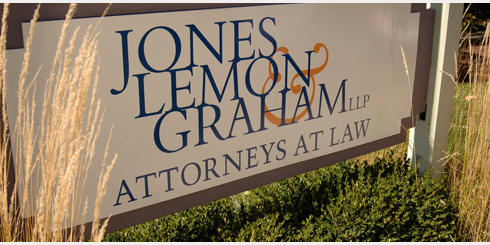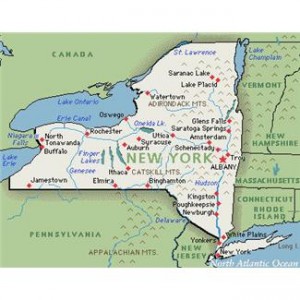After brief hiatus, New York rejoins the majority: insurer may rely on exclusion to avoid indemnity even after breach of duty to defend
by Christopher Graham and Joseph Kelly
May a liability insurer use an exclusion to avoid an indemnity obligation if it breaches a duty to defend?
As we discussed here, New York’s highest court last year initially said no. But when asked to reconsider, a majority of the court said yes. See K2 Investment Group, LLC, et al v. American Guarantee & Liability Ins. Co., 2014 NY Slip Op 01102 (Feb. 18, 2014).
There has been much commentary about K2 in the blogosphere. There is after all a lot of New York insurance business. The original decision also adopted a minority position. And it departed from long-standing New York precedent.
And it was that long-standing precedent, Servidone Construction Corp. v. Security Ins. Co. of Hartford, 64 N.Y.2d 419 (1985), which lead the majority to change its decision. As it explained:
Plaintiffs have not presented any indication that the Servidone rule has proved unworkable, or caused significant injustice or hardship, since it was adopted in 1985. When our Court decides a question of insurance law, insurers and insureds alike should ordinarily be entitled to assume that the decision will remain unchanged unless or until the Legislature decides otherwise. In other words, the rule of stare decisis, while it is not inexorable, is strong enough to govern this case.
The majority also noted cases from Hawaii and Massachusetts following Servidone and that a “federal district judge, writing in 1999, said that ‘the majority of jurisdictions which have considered the question’ follow the Servidone rule.” *See Flannery v Allstate Ins. Co*., 49 F. Supp. 2d 1223, 1227 (D. Col. 1999); *compare Employers Ins. of Wausau v Ehlco Liquidating Trust*, 186 Ill. 2d 127, 150-154 (1999) and Missionaries of Co. of Mary, Inc. v Aetna Cas. and Sur. Co., 155 Conn. 104, 112-114 (1967)(noted as minority view cases).
That Servidone involved a settlement rather than a judgment was deemed a distinction without a difference. And contrary to what the dissent argued, the original K2 decision couldn’t be reconciled with Servidone because both cases addressed whether an insurer could raise an exclusion despite breaching a defense duty.
The dissent argued that under Servidone, an insurer in breach of a duty to defend may avoid an indemnity obligation based on “non-coverage,” but not an exclusion. It explained:
Noncoverage involves the situation where an insurance policy does not contemplate coverage at its inception. For example, a homeowner’s policy would not provide malpractice liability coverage. Exclusions, in contrast, involve claims that fall within the ambit of the policy’s coverage parameters but are excepted by a particular contractual exclusion provision. Hence, a homeowner’s policy might contain an exclusion for certain types of water damage to the house.
The dissent argued “‘[u]nder those circumstances [(namely, non-coverage)], the insurance policy does not contemplate coverage in the first instance, and requiring payment of a claim upon failure to timely disclaim would create coverage where it never existed.'” [citations omitted]. An exclusion differs because it’s a way to avoid coverage that otherwise exists, so says the dissent.
The dissent also argued that Illinois, Massachusetts, and Colorado decisions cited by the majority applied the rule that an insurer breaching a duty to defend may raise a defense of non-coverage, but not an exclusion. *See also Alabama Hosp. Assn. Trust v Mutual Assur. Socy. of Alabama*, 538 So 2d 1209, 1216 (Ala. 1989)(cited by the dissent for the same rule).
None of this persuaded the majority.
Although not cited as a basis for the majority decision, plaintiffs were lenders who sued an entity and its owners to collect on a $2.85 million debt. But then also alleged one of the owner borrowers was their lawyer for the loan and committed malpractice by failing to record a mortgage securing the debt. After his insurer refused to defend, the lawyer allowed a default judgment against him exceeding the $2 million policy limit, though plaintiffs had demanded only $450,000 to settle. Then following the default, the lawyer assigned his rights against the insurer to the plaintiff lenders, who sued the insurer to collect. The lawyer apparently wouldn’t have to pay. And the default was only on the malpractice claim, not on the claim against the lawyer/owner/borrower to collect the $2.85 million debt.
With the majority decision, the insurer will be permitted to prove at trial that the judgment was really about lawyer’s as borrower/business owner, rather than as plaintiff lenders’ supposed lawyer. The insurer may now rely on: (1) a “status exclusion” for a “Claim based upon or arising out of, in whole or in part . . . D. the Insured’s capacity or status as: 1. an officer, director, partner, trustee, shareholder, manager or employee of a business enterprise . . . ;” and a “business pursuits” exclusion for a “Claim based upon or arising out of, in whole or in part . . . E. the alleged acts or omissions by any Insured . . . for any business enterprise . . . in which any Insured has a Controlling Interest.”
The dissent also was troubled that if the insurer defended the insured lawyer it could have addressed the status issues in the underling malpractice suit. It explained:
If, as the majority asserts, [lawyer’s] liability for professional negligence may have partially arisen from his actions as both an attorney and a manager of [a business] — and was therefore precluded under the “insured’s status” or “business enterprise” exclusion clauses — [insurer] should have fully participated in the underlying action and attempted to establish the basis for the exclusion. I believe that these issues should have been resolved in the original action rather than being delayed for years. The majority’s decision to authorize additional litigation and fact finding will prolong final resolution of this matter even further.
But this argument didn’t sway the majority either, particularly given Servidone.
Although now resolved in New York courts, we may see legislative attempts to change the rule and expect the debate isn’t over elsewhere. See our blog discussion here about Columbia Casualty Company v. Hiar Holdings, LLC, No. SC93026 (Mo. Aug. 13, 2013)(failure to defend foreclosed insurer’s coverage defense and opened up limits).
Tags: New York, duty to defend
Category: D&O Digest, Lawyers Malpractice Digest, Professional Liability Insurance Digest Comment »

